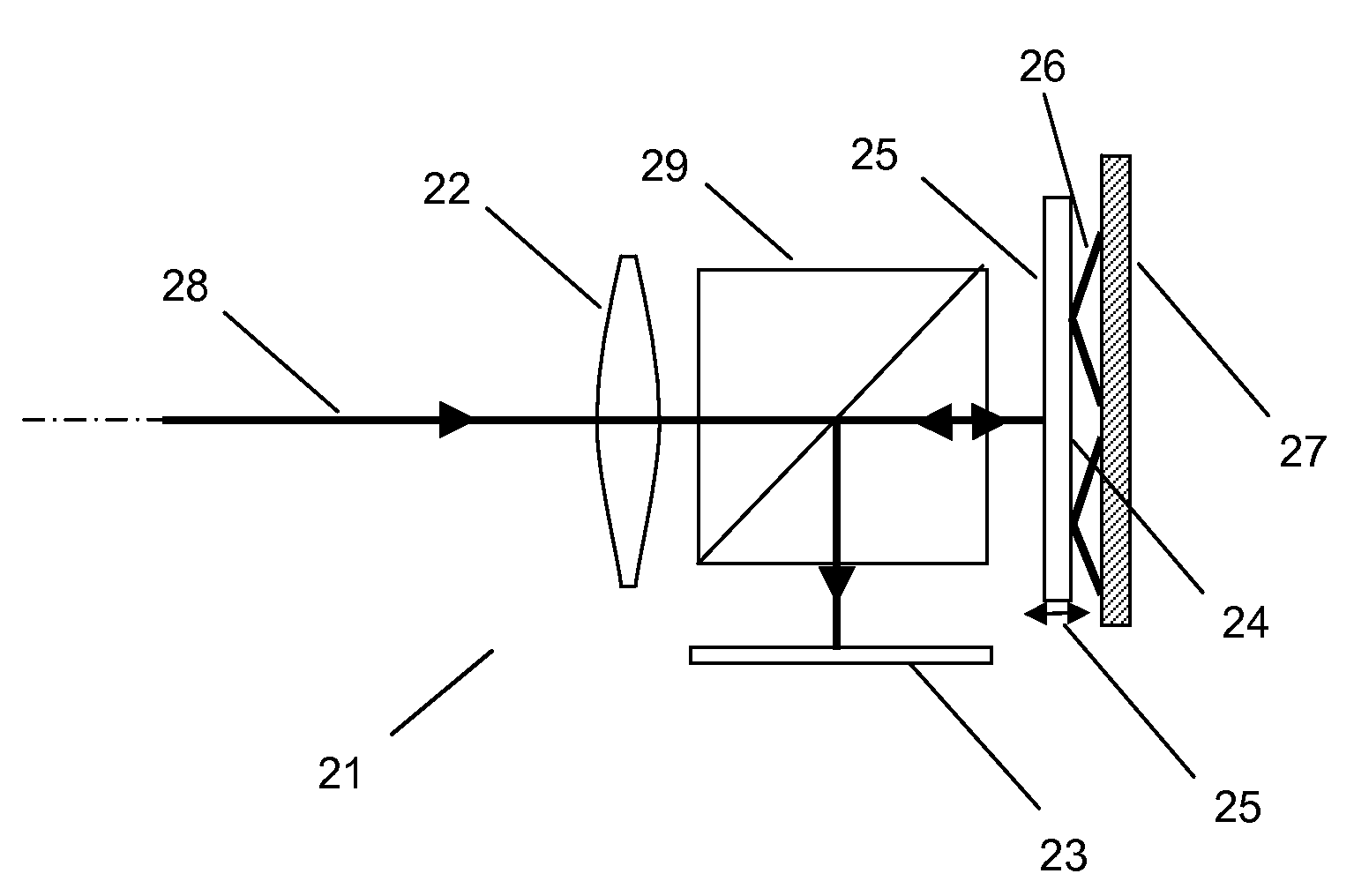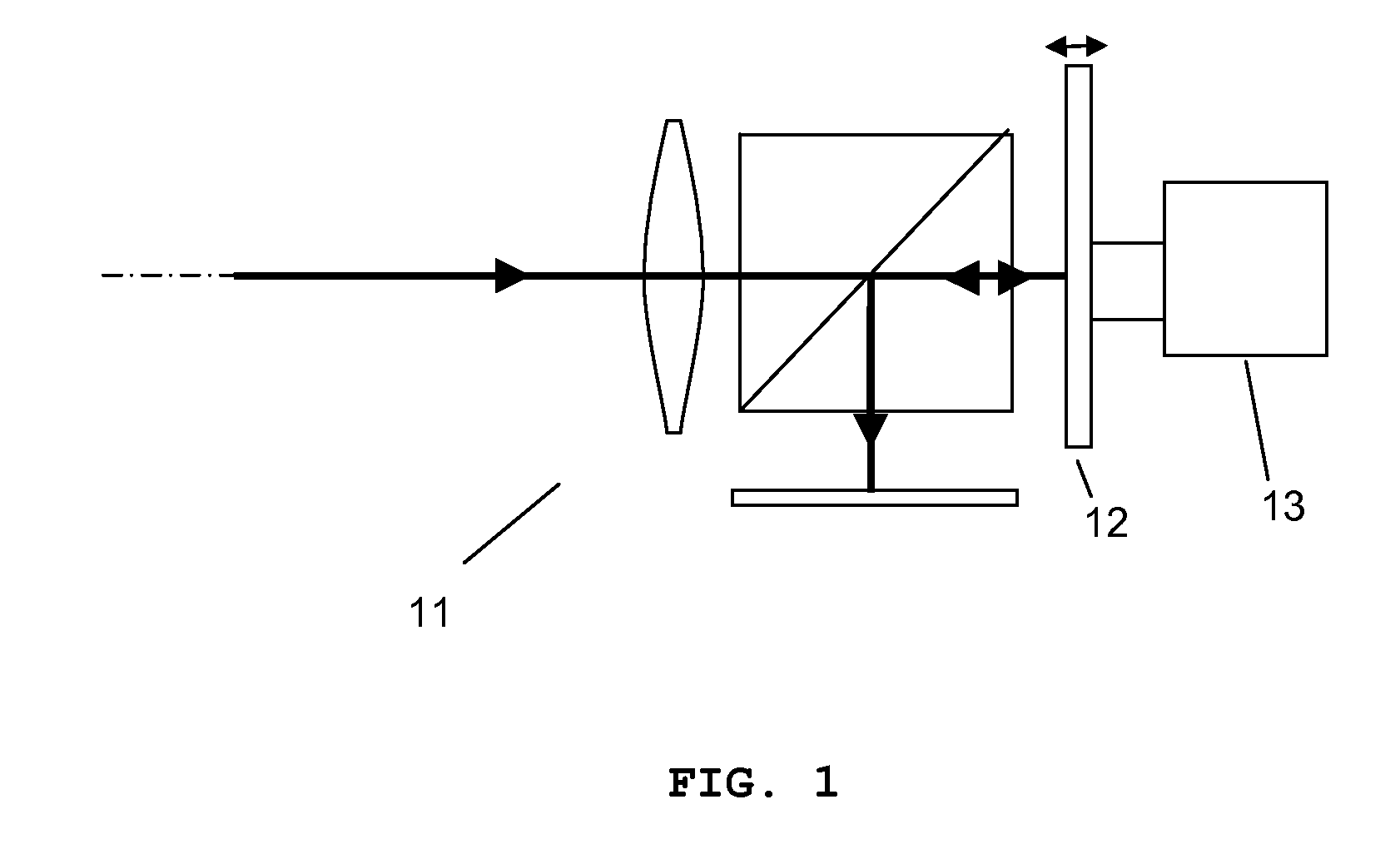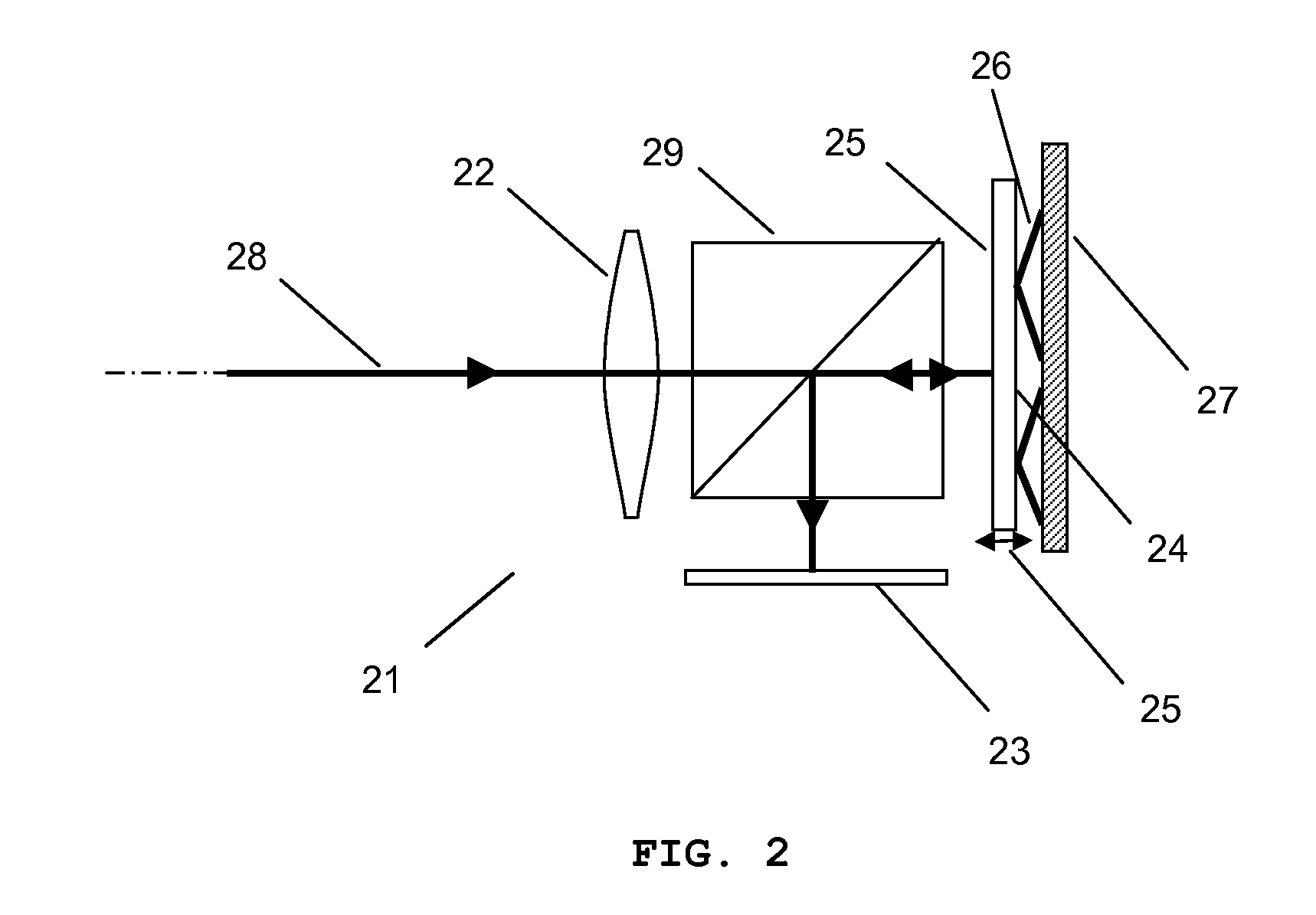Compact automatic focusing camera
a compact, automatic technology, applied in the field of automatic focusing devices, can solve the problems of limited range in the out-of-plane translation, and achieve the effects of increasing reliability and focusing speed, and reducing volume and power consumption
- Summary
- Abstract
- Description
- Claims
- Application Information
AI Technical Summary
Benefits of technology
Problems solved by technology
Method used
Image
Examples
Embodiment Construction
[0039]FIG. 1 shows a conventional automatic focusing system using a mirror translation. The conventional automatic focusing system 11 uses a mirror 12 configured to be actuated by a macroscopic actuator 13. This automatic focusing system can have many problem including bulky size, large power consumption, slow focusing time, and eventually decrease in portability.
[0040]FIG. 2 is a schematic diagram for a compact automatic focusing system of the present invention using an MEMS unit. The compact automatic focusing system 21 comprises a lens unit 22, an image sensor 23, and an MEMS unit. Although the lens unit 22 is illustrated as a single objective lens, those skilled in the art will understand that the lens unit 22 may comprise a plurality of lenses depending upon a particular application. The MEMS unit comprises at least one micromirror 24 having a reflective surface and configured to have out-of-plane translation 25, at least one actuation unit 26 configured to provide the micromir...
PUM
 Login to View More
Login to View More Abstract
Description
Claims
Application Information
 Login to View More
Login to View More - R&D
- Intellectual Property
- Life Sciences
- Materials
- Tech Scout
- Unparalleled Data Quality
- Higher Quality Content
- 60% Fewer Hallucinations
Browse by: Latest US Patents, China's latest patents, Technical Efficacy Thesaurus, Application Domain, Technology Topic, Popular Technical Reports.
© 2025 PatSnap. All rights reserved.Legal|Privacy policy|Modern Slavery Act Transparency Statement|Sitemap|About US| Contact US: help@patsnap.com



